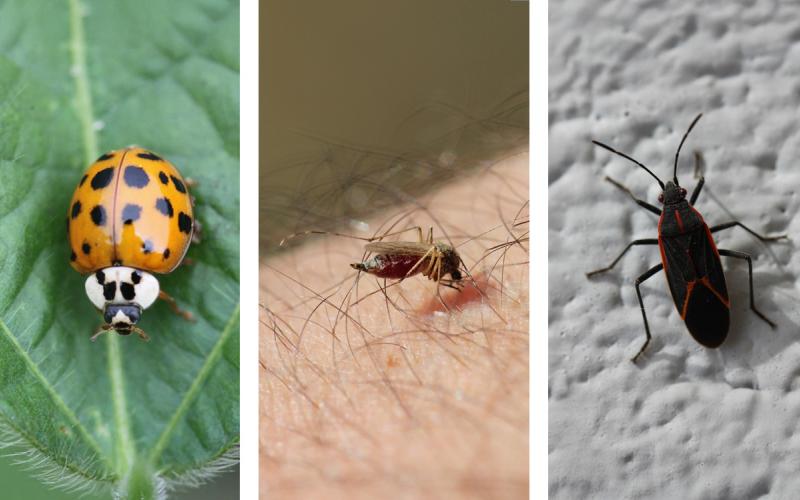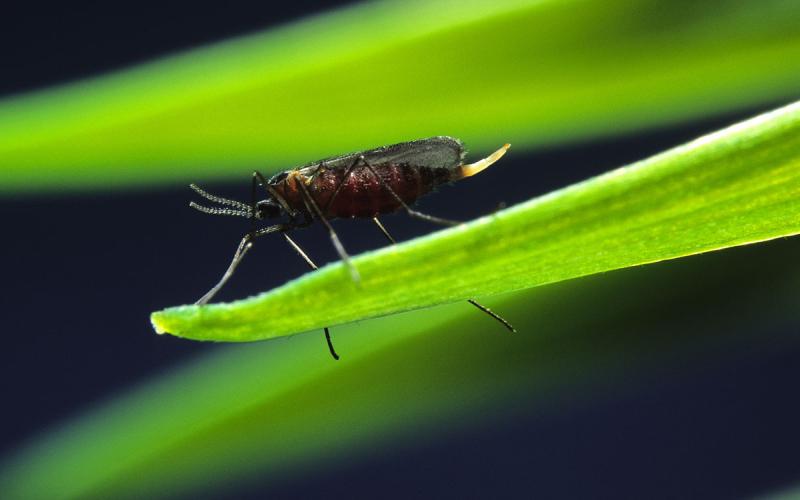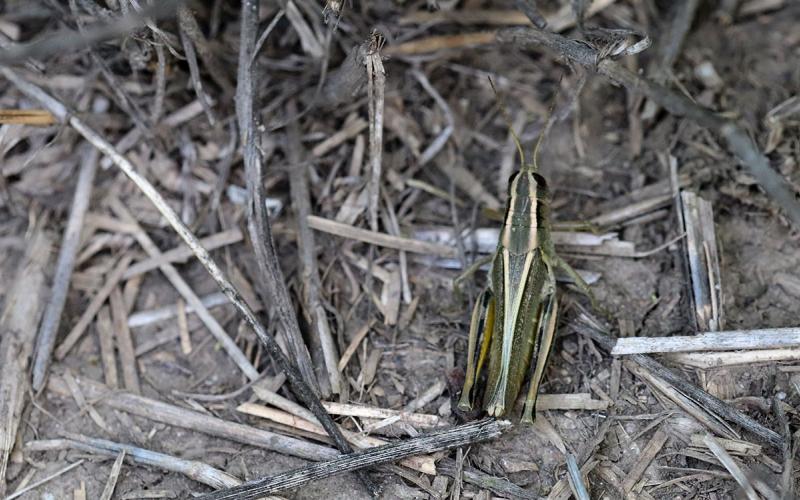Written collaboratively by Adam Varenhorst, Amanda Bachmann, Ruth Beck and Patrick Wagner.
In South Dakota, the most commonly encountered mites in wheat are wheat curl mite and brown wheat mite. In addition to feeding, wheat curl mites are vectors of Wheat streak mosaic virus. Brown wheat mites can build up large populations and injure wheat through feeding. There are other species of mites that may also be observed in wheat, but generally do not reach populations large enough to cause significant injury. These additional mites include the banks grass mite and winter grain mite. Proper identification of these mites is helpful when determining if management is necessary.
Wheat Curl Mite
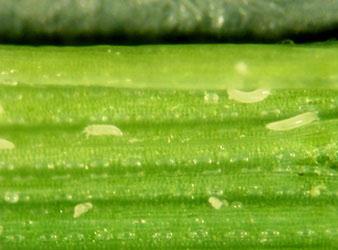
Wheat curl mites are very small and white in color. They can be identified by their elongated cigar-shaped body which is approximately 1/100th of an inch long. Because of their very small size, identification of this pest requires a hand lens. Identification of wheat curl mites is important as research has shown that insecticide management is not effective at reducing their populations. Wheat curl mites can be observed in wheat during the fall and spring.
Brown Wheat Mite
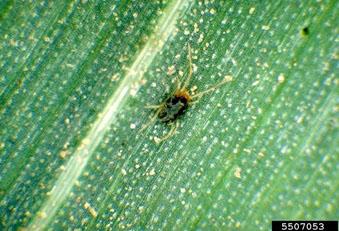
Brown wheat mites are very small and are dark red-brown in color. These mites have eight visible legs that are a light yellow-orange color. The front pair of legs are nearly twice as long as the other three pairs and can often be used for identification purposes . Because of its small size (approximately the same size as newspaper print period), identification of this pest may require a hand lens. Feeding by the brown wheat mite produces stippling (small white spots) on the leaves. This feeding injury may cause the leaves to turn white or brown, and is sometimes confused with symptoms of drought stress. Brown wheat mites can be observed in the early spring prior to hot temperatures, and also in the fa
Banks Grass Mite
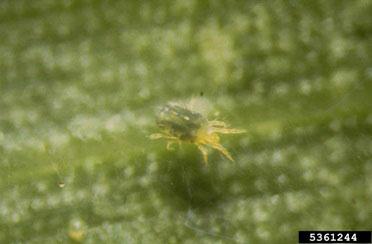
Banks grass mites are very small and typically a green color. The overwintering forms that are observed in the fall are bright orange in color. Like other mites, the banks grass mite has eight legs, however, they are all fairly uniform in length. Additional clues of infestations of banks grass mites include the presence of heavy webbing on the leaves of infested plants. Infestations of banks grass mites in wheat is more common in the fall than in the spring. This is due to the movement of these pests from other hosts including corn during senescence to green newly emerging winter wheat.
Winter Grain Mite
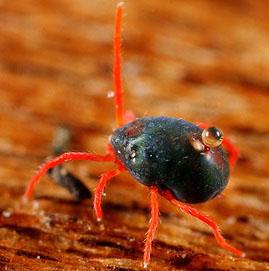
Winter grain mites have dark brown and often nearly black bodies. Similar to the other mite pests described previously, winter grain mites have eight legs. Their legs are a bright red-orange color, which stand out from their otherwise dark colored bodies. The two front legs of the winter grain mites are longer than the other three pairs. The most significant characteristic for identification purposes is their anal pore which is on the upper surface of their abdomens. In this image, this is marked by the presence of the globular shaped excrement appearing on the upper surface of the abdomen. Other mite species have anal pores on their undersides of their abdomens. Winter grain mites are active beginning in September and an additional generation may be observed in March or April. These mites require habitats with a high moisture environment. Because of this, they are not generally observed in large populations in South Dakota.
